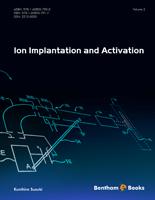Preface
Classical field theory is used by physicists to describe a wide variety of physical phenomena. Those include electromagnetism, fluid dynamics, gravitation and quantum mechanics. The central entity of field theory is the field which is usually a multi component function of space and time. Those multi component functions are usually grouped together as vector fields as in the case of electromagnetic theory and fluid dynamics, in other cases they are grouped as tensors as in theory of gravitation and yet in other cases they are grouped as complex functions as in the case of quantum mechanics. In order to know the value of the field one needs to solve a set of coupled partial differential equations with given boundary and initial conditions. Both the equations and the boundary and initial conditions are in most cases available from a variational principle through an adequate Lagrangian, although in some cases this is less straight forward as in the case of fluid dynamics. An appropriate field theory satisfies two main requirements: First it should describe correctly the relevant physical phenomena and second the theory should describe the phenomena with a minimal number of functions, equations and assumptions. Advances in classical theory have thus two principal meanings. One meaning is improvement of a known theory in the sense that the new theory proposed now describes correctly a wider class of physical phenomena. A second meaning is that a given physical phenomena is described by less functions, equations or assumptions than was needed before.
This book is aimed at introducing recent advances in classical field theory of both meanings. The book will cover recent advances in electromagnetism, fluid dynamics, gravitation and quantum mechanics. Not all advances will be covered but rather a selected group.
A final note regarding the meaning of the word "classical" in the present context. In classical field theory the fields are multi component functions, in contrast to "quantum" field theories in which the fields are multi component operators. The bridge between classical and quantum fields is the process of "second quantization" or through the Feynman path integral. The quantum field theory is usually used to describe elementary particle phenomena and will not be discussed here.
I would like to thank all contributors to the present book, those include (in alphabetical order): Prof. Robert Englman, Dr. Yuri Lurie, Dr. Gad A. Pinhasi, Prof. Yosef Pinhasi and Dr. Marcelo Schiffer. The name of each of the contributors is indicated on the chapter which he contributed. Chapters in which no name appear were authored solely by the editor of this book.
Lat but not least thanks are due to Mr. Netanel Gabdank for his meticulous preparation of the index of this book and to the editorial director Dr. Matthew Honan and Ms. Bushra Siddiqui of Bentham Science Publishers for prolific collaboration.
Asher Yahalom
Ariel University
Israel





